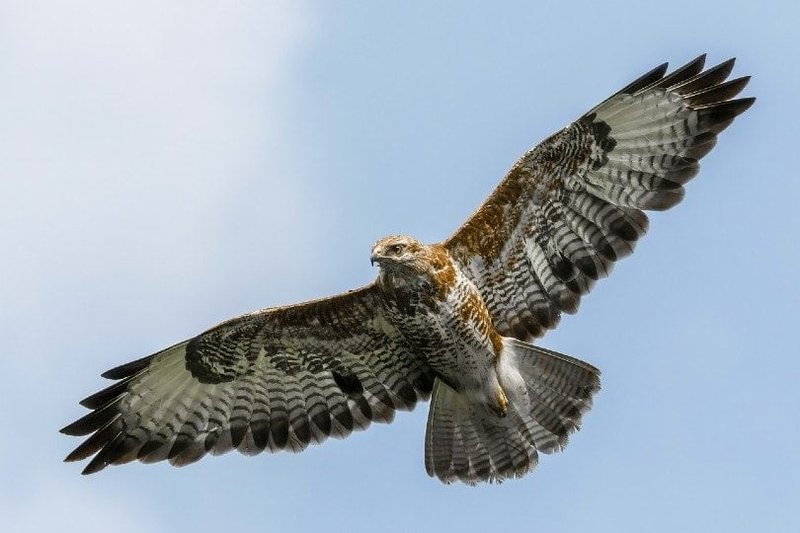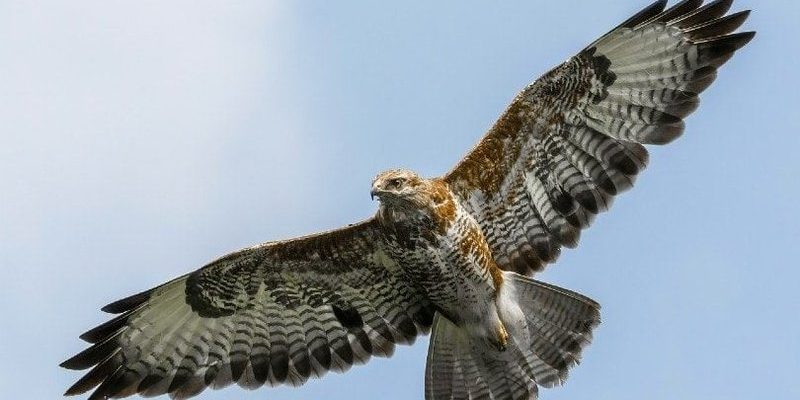
Let’s dive into the fascinating world of hawks, exploring their *flight strategies*, *hunting methods*, and how they have adapted to become such successful predators. From their keen eyesight to their powerful talons, every detail plays a role in how they conquer their environment. Grab your metaphorical binoculars, and let’s take a closer look!
1. The Anatomy of a Hawk: Built for Flight
Hawks are built for aerial prowess. Their lightweight bones and strong muscles allow them to soar high and dive swiftly. A key feature is their broad wings, which provide lift while conserving energy. Have you ever noticed how they seem to hang in the air, riding thermal currents? This ability to utilize updrafts helps them stay aloft for hours without flapping their wings much. It’s like they’re taking advantage of a natural escalator in the sky.
Their sharp beaks and strong talons are not just for show; they are designed for catching and tearing apart prey. When a hawk spots its next meal, it can dive at speeds over 120 miles per hour! Isn’t that unbelievable? That speed combined with their incredible eyesight enables them to spot movement on the ground from great heights, making them highly efficient hunters.
2. The Art of Soaring: Mastering the Thermals
So, what’s the secret behind a hawk’s ability to soar? It all comes down to something called *thermals*. Thermals are columns of warm air that rise from the ground. When a hawk finds a thermal, it can glide effortlessly upward, gaining altitude without using much energy. Think of it like finding a free ride on an escalator.
Hawks use this technique during hunting as well. By soaring high, they can scan a large area for potential prey. Once they spot something, they can quickly adjust their altitude and swoop down for the catch. This ability to combine soaring with sharp hunting skills allows hawks to cover miles of territory efficiently.
3. Keen Vision: The Hawk’s Superpower
When talking about hawks, we can’t overlook their extraordinary vision. Did you know that hawks can see in color better than humans? Their eyes are specially adapted to detect movement, even in low light conditions. Imagine watching a movie where you can see the slightest detail; that’s how a hawk perceives its surroundings.
With a *field of view* that’s nearly double that of a human, hawks can spot prey from a distance of a mile away. This means they can identify a mouse or a rabbit scurrying along the ground long before it even knows the hawk is there. Their skills in vision are not just cool facts; they’re crucial for survival. Being able to see potential meals and threats makes hawks formidable hunters.
4. Hunting Techniques: The Swoop and Stalk
When it comes to hunting, hawks are quite strategic. They often employ a method called the swoop and stalk. Unlike some birds that rely solely on speed, hawks can also be patient. They might perch silently on a tree branch, scanning the ground below for movement. Once they spot prey, they’ll launch into a swift dive, using their keen eyesight to calculate distance and speed.
Alternatively, some hawks prefer to hunt in pairs. This teamwork can confuse prey and increase their chances of a successful catch. Imagine two hawks swooping down from different angles—it’s a tactic that makes them genuinely efficient. It’s like a well-coordinated team effort in sports, making it harder for their prey to escape.
5. The Role of Vocalizations: Communication in the Sky
Hawks aren’t just masters of flight and hunting; they also have an interesting way of communicating. They use various vocalizations to express different emotions or alerts. For example, when they spot a potential threat, they might emit sharp, piercing calls to warn others in the area.
These sounds serve not only as alarms but also as a way for hawks to establish territory. Think of it like a neighborhood watch; the calls help them mark boundaries and keep other hawks at bay. Vocalizations play a crucial role in their survival, helping them navigate social dynamics while hunting.
6. Adaptation to Environment: Masters of Survival
Hawks are found in diverse habitats, from forests to deserts. Their ability to adapt to different environments is remarkable. For example, red-tailed hawks are commonly found in North America and are known for adapting to urban settings. They can hunt successfully in city parks, making the most out of what their environment offers.
This adaptability extends to their hunting techniques as well. Depending on the available prey, hawks can switch up their strategies. Some may hunt small mammals one day and focus on birds or insects the next. This flexibility is essential for survival, especially as seasons change and food availability shifts. Hawks truly are survivors, showcasing nature’s incredible ability to adapt.
7. Conservation Status: Protecting These Magnificent Birds
Despite their prowess, many hawk species face threats from habitat loss, pesticides, and climate change. Conservation efforts are crucial for ensuring these majestic birds continue to soar through our skies. Organizations work tirelessly to protect their habitats, promote understanding, and educate the public about the importance of hawks in our ecosystem.
You might be wondering how you can help. Simple actions like supporting local wildlife initiatives or educating others can make a difference. Every effort counts when it comes to preserving the unique flying and hunting techniques of these incredible birds.
In conclusion, hawks are not just birds of prey; they are remarkable creatures with a blend of *anatomy, adaptability,* and *strategy.* From their superior flying techniques to their incredible hunting skills, they captivate our imaginations and remind us of the beauty of nature. So next time you see a hawk gliding overhead, take a moment to appreciate the mastery behind its flight and tactics. It’s a beautiful dance of survival that deserves our respect and protection.

